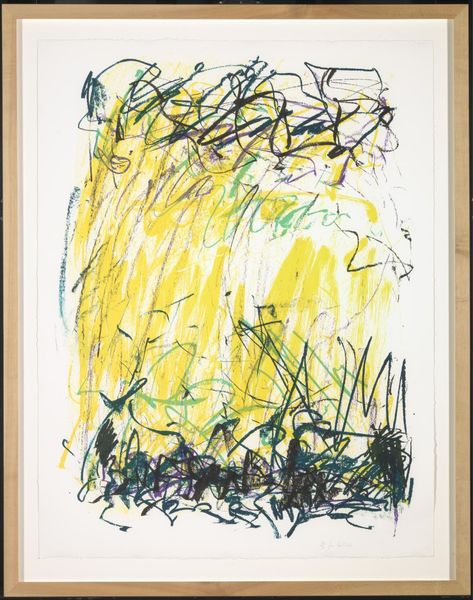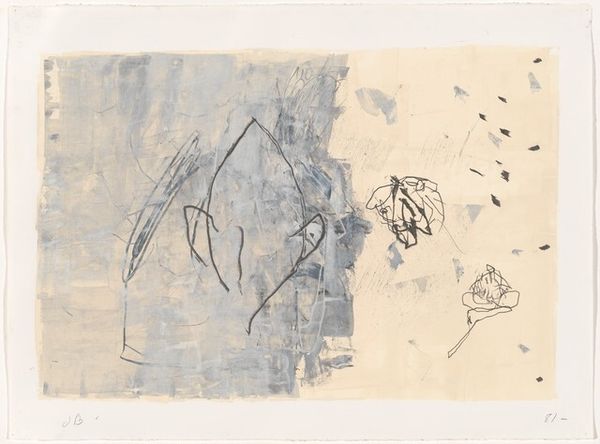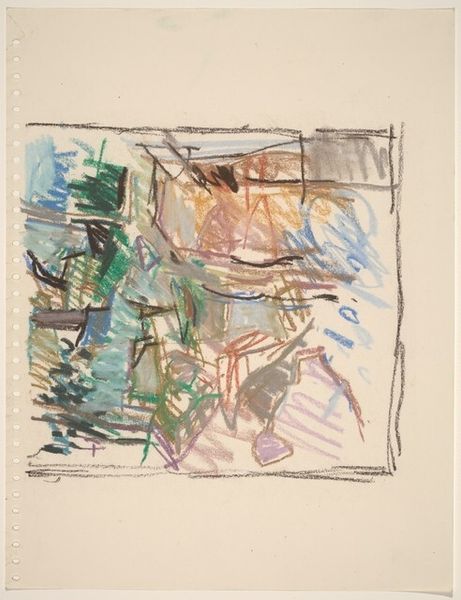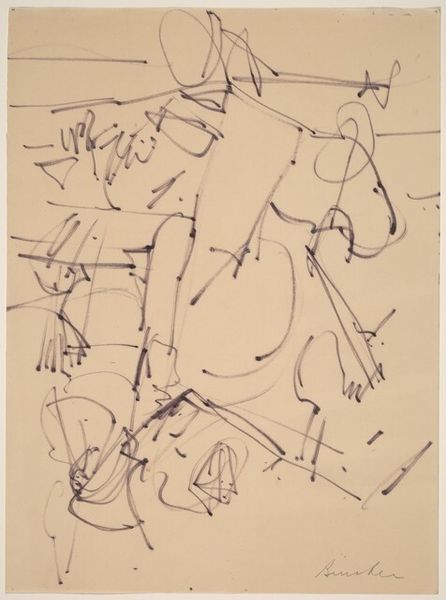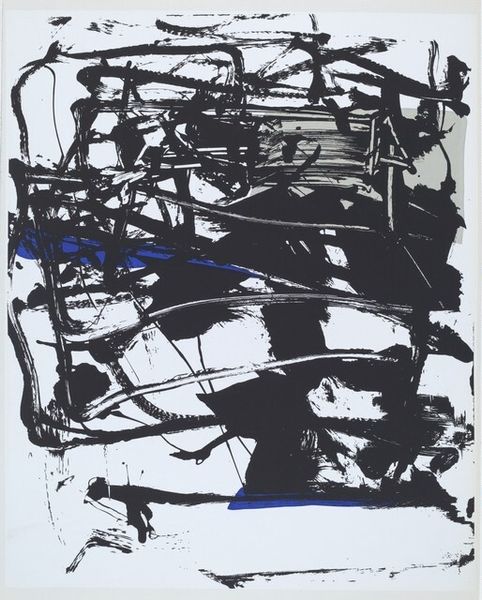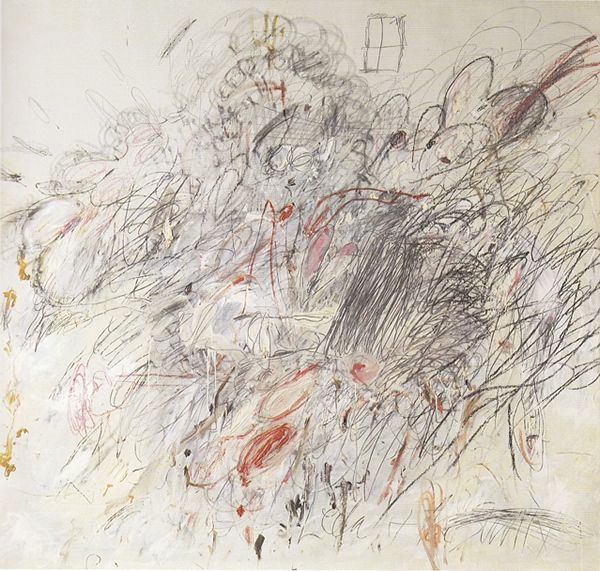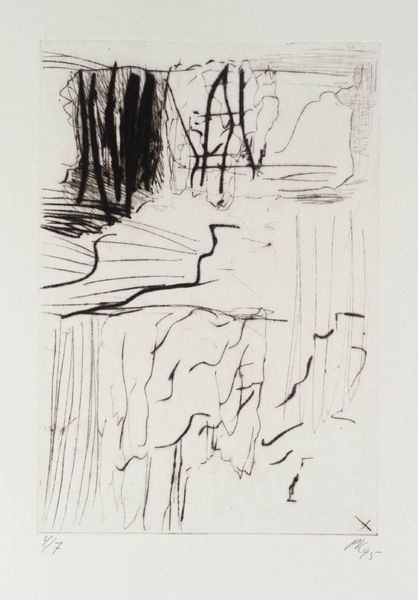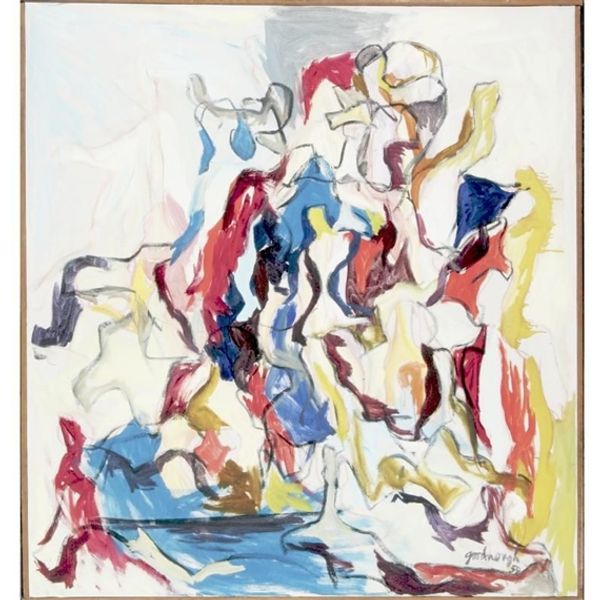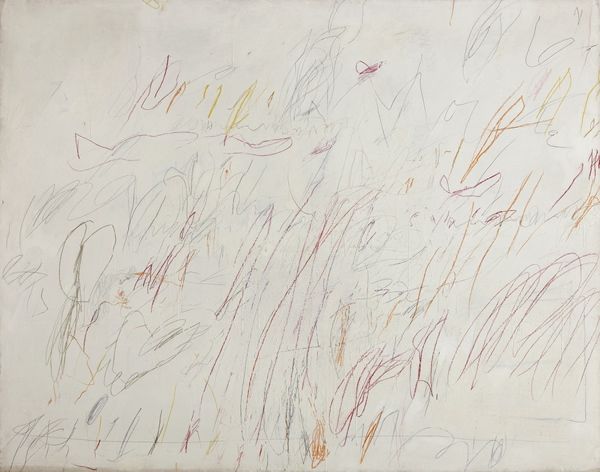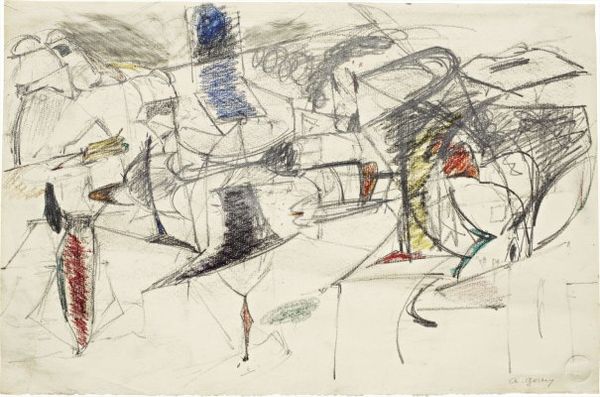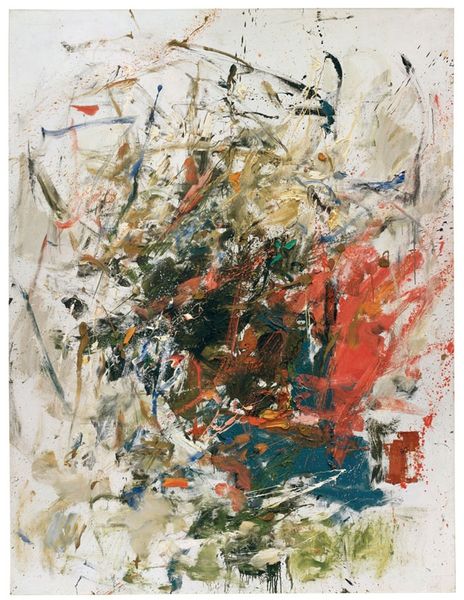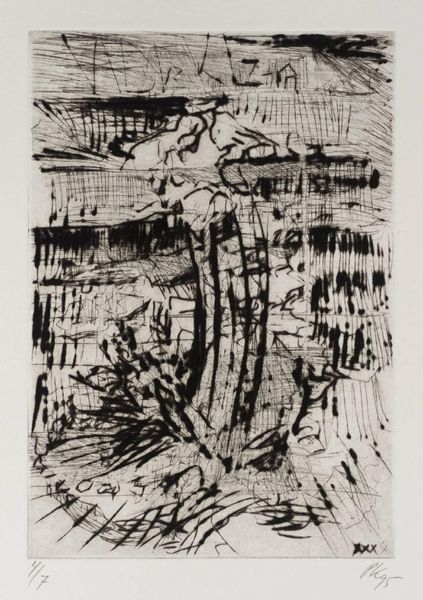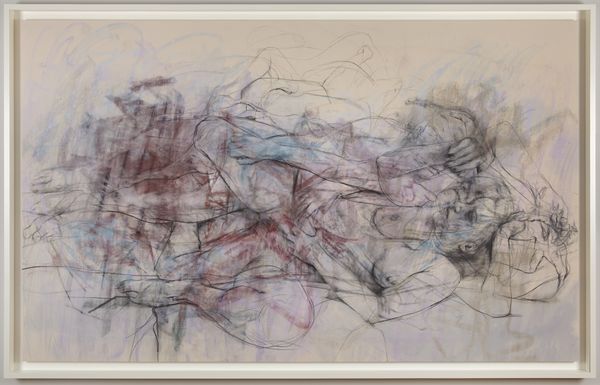
Dimensions: image: 998 x 712 mm
Copyright: © Estate of Joan Mitchell | CC-BY-NC-ND 4.0 DEED, Photo: Tate
Curator: Joan Mitchell's "Sides of a River I" presents a captivating exploration of landscape through abstract expressionism. Editor: It feels like a memory of a place, fading at the edges but with these intense bursts of color trying to hold onto something. Curator: Mitchell, working within a male-dominated art world, challenged traditional landscape painting, moving beyond mere representation to capture subjective experience. Editor: The tension between the upper and lower registers is compelling; the top feels light and airy, almost hopeful, while the bottom is this dense, almost brooding mass. How does this relate to the riverine aspect? Curator: Consider the river as a divider, a source of life, but also of potential danger, reflecting the complexities of the natural world and our relationship to it. Editor: Yes, and Mitchell's use of color, the blues and reds against the stark white, evokes a sense of both tranquility and urgency. It makes me think about the political issues surrounding access to clean water and environmental justice. Curator: It's fascinating to consider how abstract art can address pressing social issues, reflecting the cultural anxieties of its time. Editor: Absolutely. Mitchell's work invites us to consider our own place within a world that is both beautiful and threatened. Curator: A powerful reminder of the ever-present tension between humanity and nature.
Comments
tate 7 months ago
⋮
http://www.tate.org.uk/art/artworks/mitchell-sides-of-a-river-i-p12147
Join the conversation
Join millions of artists and users on Artera today and experience the ultimate creative platform.
tate 7 months ago
⋮
Mitchell began her career in New York, where she was closely associated with the Abstract Expressionist movement. Much of her work was concerned with her experience of landscape. Although these prints are heavily abstracted, there are strong traces of the natural world, as the title indicates. Dense bands of marks at the top and bottom of the paper can be seen as river banks. The lightly-worked areas between suggest the water of the river itself. Gallery label, November 2004
